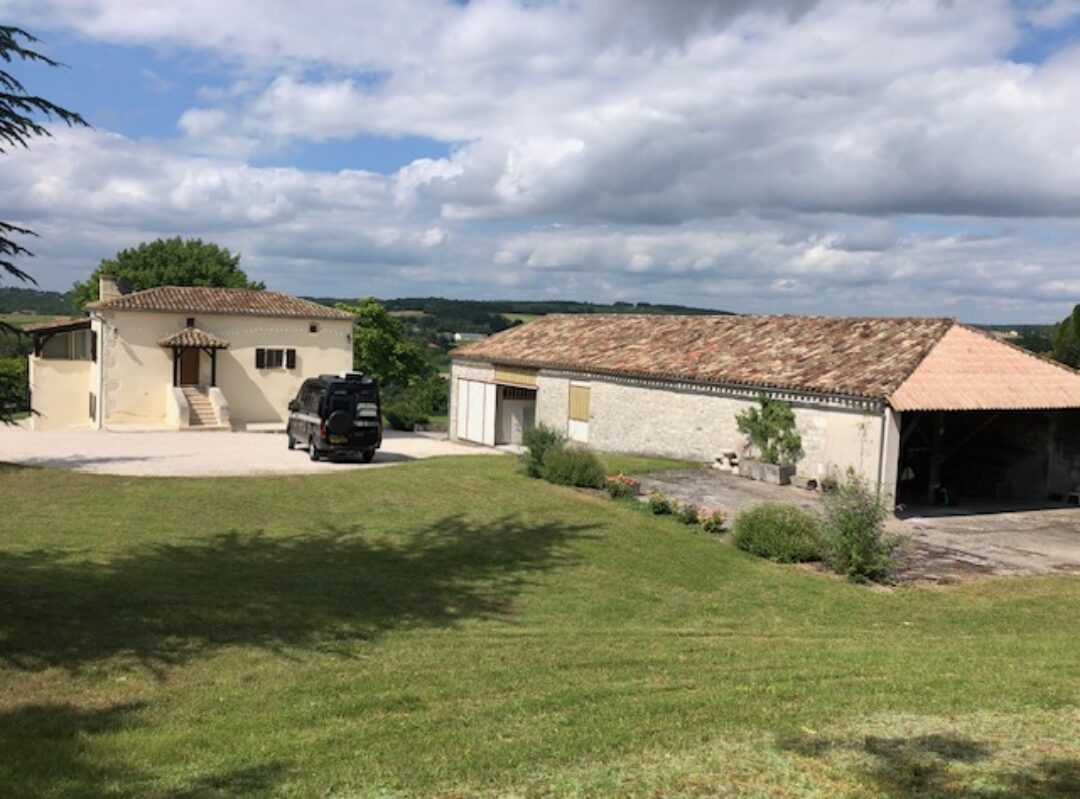We’ve moved on from Normandy to a much more central region of France to stay at the house of Joe’s friend, Ron, who has very kindly allowed us to use his house as a base during our travels in France. The house is in a small hamlet in the Haute-Vienne department, now part of the Nouvelle-Aquitaine region but formerly part of the Limousin region, which no longer exists as an administrative region. It is one of the most sparsely populated areas in France and not an area that either of us knows, so hopefully lots to discover. It’s a very rural area, mainly agricultural, and also famous for its Limousin cattle. The nearest neighbours are motorhomers and usually travel further afield than Covid restrictions will currently allow and they have been keen to tell us about places to visit locally.
There are two main rivers in the Haute Vienne – La Vienne and La Gartempe, a tributary of the Creuse. Access to La Gartempe is a short walk from the house and there is a picnic area where you can launch kayaks, small boats, etc. We have some new ‘toys’ with us that Joe is keen to use but the river is in full flood following recent rain and it’s flowing too high and too fast at present, so we’ll have to wait and a walk along the river had to suffice. The nearest village is a cycle ride away and has a café/ restaurant where we enjoyed a meal and some live music. One of the owners appears to be English and the clientele was a mixture of French and English – locals we assume as we haven’t seen any other UK number plates.

So far we have explored the two nearest larger towns. Le Dorat is considered to be the ancient capital of the historical region of Basse-Marche and probably gets its name from the gilded angel on the top of the Lou Dora bell tower. The town is dominated by the grey granite 12th Century Collégiale Church of St Pierre with an octagonal bell tower. Inside the church is notable for its large granite baptismal font – its huge size goes back to the days when full-body baptisms we’re carried out. Behind the font under a stained glass window were displayed some large bells but unfortunately no information about why they were there. We did a walk in the countryside around the town that was named ‘Les Sept Clochers’ (7 bells), so perhaps they are just some of the 7 bells in the town. Le Dorat also features the only fortified entry gateway in the region, the 15th century Port Bergère, thought to be named after the shepherds (bergers) who used the gate to enter the town.

Following the recommendation of the neighbour we explored the small lanes behind the church and found the small Monastère du Carmel, inhabited by nuns until a few years ago and still used for religious services. A little oasis tucked away in a lane where all the houses have wonderful displays of plants outside their front doors.










Só enjoying your posts and the photographs are lovely. Particularly like the one of the pair of you.
I do so hope that you won’t be affected by the terrible floods – when you move on please stay well away from rivers.
Love, Mary and Ray xx
Thanks Mary. We’ll certainly try and stay safe! x
Hi Claire. Interesting to hear about an area I don’t know. One thing about the French is that they have managed to preserve so much more of their old villages than we have with the result that so many have a fascinating history. Glad you weren’t any further east and have therefore escaped the terrible storms and floods. My blood ran a bit cold when I realised that if things had gone according to plan I would have been in Maastricht at the end of last week! Not exactly the ideal weather for an open air Andre Rieu concert!!
Bonne continuation. Just off to Francophiles.
Amities Jill
Hi Jill hope you had a good evening at Francophiles. It’s terrible reading of the devastation of the floods and sobering to think you might have been in the area. I agree that there are so many pieces of preserved history here, tucked away in hidden corners. Take care x